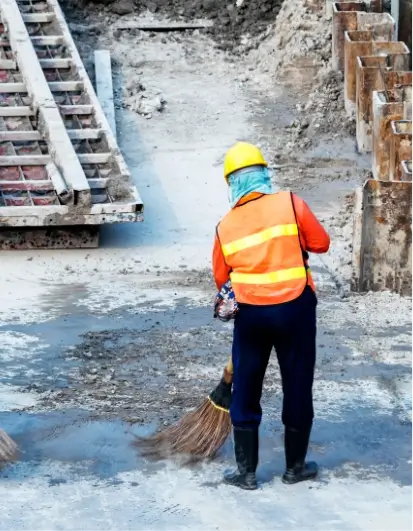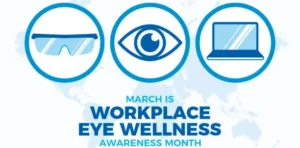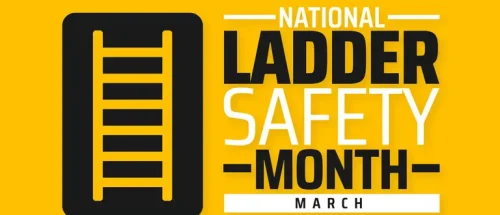Must Follow March Safety Topics for 2025
You may have successfully survived the harsh winter weather, but getting yourself equipped for the spring challenges is a must. To start, you must enroll yourself in OSHA 10-Hour Construction training to build a strong foundation in workplace safety and adherence. After this, you can analyze our March safety checklist for 2025 to have a detailed overview of all possible hazards and upcoming safety events in this month.
1. Brain Injury Awareness
Common Causes of Brain Injuries in the Workplace:

2. Workplace Eye Wellness
Common Workplace Eye Hazards:

3. Ladder Safety
Slips and falls are common hazards in any workplace involving physical activities. However, ladder falls and slips pose the greatest danger. To ensure a safe working environment, workers must be trained and the organization has stable, balanced, and good-quality ladders.
Common Ladder-Related Risks:

4. Spring Cleaning Safety
Common Spring Cleaning Hazards:

5. Daylight Saving Time and Workplace Safety
How Daylight Saving Time Affects Workplace Safety:

6. Safe Driving in Changing Weather Conditions
Spring brings a warmer temperature that melts snow and frequent rain. This can be hazardous for drivers who need to be aware of fog, potholes, and slippery roads. According to the National Highway Traffic Safety Administration (NHTSA), thousands of crashes yearly are caused by poor weather conditions and driver inattention. Every organization should take the necessary steps to guide workers on the safest routes to take and the precautions to follow when coming to work.
Common Spring Driving Hazards:

Upcoming March Safety Events in the U.S.
Brain Injury Awareness Day 2025

Date: March 3-5, 2025 Organizer: Brain Injury Association of America (BIAA) Each year, BIAA and other key stakeholders host a Brain Injury Awareness Day on Capitol Hill inch. The event includes educational sessions and advocacy opportunities to promote awareness and support for individuals affected by brain injuries.
Workplace Eye Wellness Month

Date: March 2025 Organizer: Prevent Blindness Throughout March, Prevent Blindness provides employers and employees with free information on topics ranging from eye strain to eye safety in industrial settings, aiming to promote eye health at work.
National Ladder Safety Month 2025

Date: March 2025 Organizer: American Ladder Institute (ALI) This annual observance focuses on ladder safety, with each week dedicated to specific themes such as training and awareness, inspection and maintenance, stabilization and setup, and safe climbing.
Conclusion
Keeping your workforce safe is essential for all organizations. It’s not only about a firm’s productivity or profitability; the health and wellness of the workforce should also be taken into consideration. Apart from this, OSHA regulates its policies in major states of the U.S. and ensures that those who do not follow them face heavy penalties and charges. One of the best ways to stay compliant and avoid costly violations is to enroll yourself in the OSHA 30-Hour Construction course. In any case, following these March safety tips of 2025 will help you create a safer work environment.






